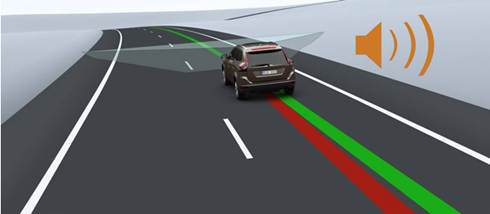The Highway Loss Data Institute, a division within the automaker-supported Insurance Institute for Highway Safety (IIHS), released findings on how active safety systems help drivers when their vehicles are fitted with crash avoidance technology and adaptive headlamps. But interestingly, lane departure warning systems aren’t living up to their claimed potential. And in some cases, the tech may be increasing the number of crashes.
The study examines property damage liability (PDL) claims, meaning claims filed by a driver who’s been involved in a collision with another vehicle.
Unsurprisingly, vehicles fitted with collision avoidance systems that automatically alert the driver of an impending crash – and in the case of the Acura, Mercedes-Benz and Volvo vehicles involved in the study, automatically brake to avoid a collision – saw declines of up to 14 percent. The Acura and Mercedes vehicles lead the list, with Volvo’s autonomous braking system reducing crashes by 10 percent. However, the Volvo system the Institute tested also included lane departure and fatigue warning systems, and the IIHS hedges its findings by saying the inclusion of those systems could have an effect on the results.
Adaptive headlamps, which change direction based on the angle of the steering wheel, also reduce PDL claims by as much as 10 percent.
What wasn’t expected in the study were findings that lane departure warning systems, which alert the driver when they begin to veer outside their lane, increased the PDL claims, although the IIHS would only say “the increases were not statistically significant [and] the results suggest these particular systems aren’t reducing overall crashes.”
The IIHS points out that the two vehicles it tested with the lane departure warning system – one Buick and another Mercedes-Benz – faired the worst in the study, with the Volvo tester doing slightly better, although that system also came bundled with the auto-braking feature and fatigue warning system, which could negate some of the issues.
Early IIHS research indicated that lane departure warning systems would prevent over 7,000 fatal crashes each year, but those estimates were strictly theoretical, and this recent study puts those claims into question.
“Lane departure warning may end up saving lives down the road, but so far these particular versions aren’t preventing insurance claims,” says Matt Moore, vice president of HLDI. “It may be that drivers are getting too many false alarms, which could make them tune out the warnings or turn them off completely. Of course, that doesn’t explain why the systems seem to increase claim rates, but we need to gather more data to see if that’s truly happening.”













